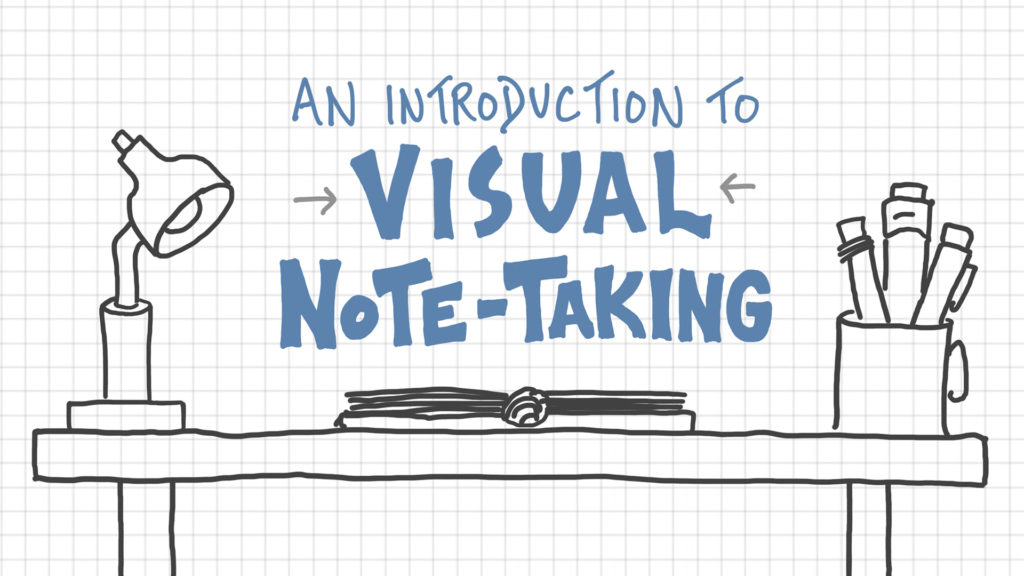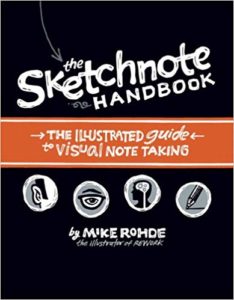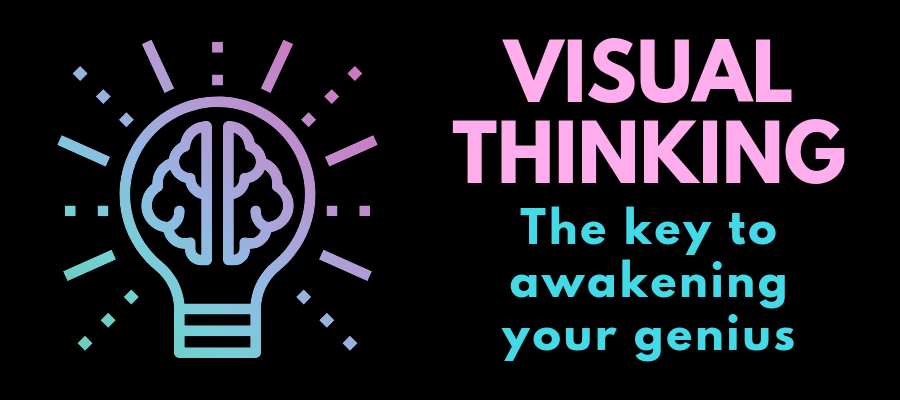Doug Neill, in his Verbal to Visual Blog, describes visual thinking as a new language that genius can use to express itself. He says that since he began sketchnoting, he believes he has become more creative. Here, I riff on his deep thoughts:
“Sketchnoting can capture your complex thoughts and ideas in ways that speaking and writing alone cannot.”
“You’re equipping your genius with a new language that will allow it to communicate in a fuller way.”
“I often say that sketchnoting was my gateway into creativity. It’s what opened me up to living a more creative life and building a creative career. I think that it’s equally fair to say that sketchnoting has given the genius inside of me a voice.”
I think he’s really onto something here. In our working lives, we have a fairly narrow perspective through which we can share our ideas. Most of the time, that’s the written word, on screen or on paper. If you follow Doug’s line of thinking, this significantly limits our creative minds from expressing all of the richness they contain.
 Visual thinking gives you a rich palette that you can use to express your true genius. The mind is a visual instrument, and responds best when it has ways to express itself in pictures, images, drawings and other forms of visual expression.
Visual thinking gives you a rich palette that you can use to express your true genius. The mind is a visual instrument, and responds best when it has ways to express itself in pictures, images, drawings and other forms of visual expression.
This isn’t just some artsy distinction, either. Many experts admins studies have shown that visual thinking can help business people deconstruct and solve challenges, reach clarity on important business issues, make better informed decisions and imagine new possibilities.
But if you don’t believe in its potential power in your life, then it doesn’t exist for you.
Imagine for a moment that basketball superstar Michael Jordan could only play the game with one hand; the other one would be tied behind his back. Imagine if tennis superstar Serena Williams only had the use of one arm, and was forced to only hit forehand shots.
You get the general idea. Restricting yourself to only think and capture ideas in linear form is like forcing your brain to operate at much less than its optimum capacity.
When you express yourself in sketches, pictures, diagrams and illustrations you tap into a different part of your brain, which supercharges your ability to be creative. You give it a channel through which it can communicate to the outside world.
Consider for a moment the opposite of what Doug has just told us. If you don’t try to exercise this visual thinking muscle, it will be as if creativity lives on the other side of an impenetrable wall. Simply put, if you do not believe you are creative, then you aren’t. It’s sort of a self fulfilling prophecy.
But creativity is NOT an innate skills; it’s a muscle that can be exercised and developed.
It’s time to get serious about visual thinking
If you’re passionate about maximizing your effectiveness and accelerating your success, then you need to take visual thinking seriously. It’s a powerful conduit into your amazing imagination.
Here are some ways to build up your visual thinking muscles:
 Read Doug Neill‘s Verbal to Visual Blog and take his Introduction to Visual Note Taking course. It’s an easy, approachable guide on sketching your ideas.
Read Doug Neill‘s Verbal to Visual Blog and take his Introduction to Visual Note Taking course. It’s an easy, approachable guide on sketching your ideas.
Read Back of the Napkin: Solving Problems and Selling Ideas with Pictures by Dan Roam. This book has become one of the most popular sources of learning about visual thinking for an excellent reason: it’s easy, fun and has the potential to change your life, even if you don’t think you can draw. He has also published several follow-up guides to expressing your ideas visually, including Unfolding the Napkin: The Hands-On Method for Solving Complex Problems with Simple Pictures and Draw to Win: A Crash Course on How to Lead, Sell, and Innovate With Your Visual Mind.
Learn how to mind map. This introductory e-course will teach you everything you need to know to get started with creating visual diagram is using mind mapping software.
 Study sketchnoting, using Mike Rohde’s excellent books and training materials. Sketchnoting is something like linear note taking on steroids. It’s the practice of using a combination of written words and simple pictures to make your notes more memorable, easier to skim and valuable to share. Here’s where to find his expert resources:
Study sketchnoting, using Mike Rohde’s excellent books and training materials. Sketchnoting is something like linear note taking on steroids. It’s the practice of using a combination of written words and simple pictures to make your notes more memorable, easier to skim and valuable to share. Here’s where to find his expert resources:
- The Sketchnote Handbook: the illustrated guide to visual note taking
- The Sketchnote Workbook: Advanced techniques for taking visual notes you can use anywhere
Now’s the time to get started – happy exploring!


Leave a Reply